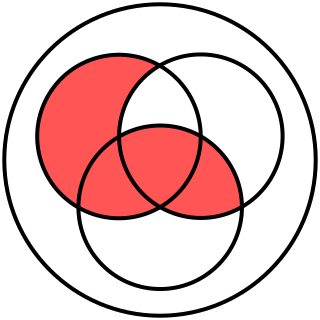Top Qs
Timeline
Chat
Perspective
Conditioned disjunction
From Wikipedia, the free encyclopedia
Remove ads
In logic, conditioned disjunction (sometimes called conditional disjunction) is a ternary logical connective introduced by Church.[1][2] Given operands p, q, and r, which represent truth-valued propositions, the meaning of the conditioned disjunction [p, q, r] is given by
In words, [p, q, r] is equivalent to: "if q, then p, else r", or "p or r, according as q or not q". This may also be stated as "q implies p, and not q implies r". So, for any values of p, q, and r, the value of [p, q, r] is the value of p when q is true, and is the value of r otherwise.
The conditioned disjunction is also equivalent to
and has the same truth table as the ternary conditional operator ?: in many programming languages (with being equivalent to a ? b : c). In electronic logic terms, it may also be viewed as a single-bit multiplexer.
In conjunction with truth constants denoting each truth-value, conditioned disjunction is truth-functionally complete for classical logic.[3] There are other truth-functionally complete ternary connectives.
Remove ads
Truth table
The truth table for :
Remove ads
References
External links
Wikiwand - on
Seamless Wikipedia browsing. On steroids.
Remove ads

![{\displaystyle [p,q,r]\Leftrightarrow (q\to p)\land (\neg q\to r).}](http://wikimedia.org/api/rest_v1/media/math/render/svg/4a8d857efcade3330c68c4784c50eba8c9c208cd)







![{\displaystyle [b,a,c]}](http://wikimedia.org/api/rest_v1/media/math/render/svg/2d031e5471c64a4b5d499fa00315b3377b304d20)
![{\displaystyle [p,q,r]}](http://wikimedia.org/api/rest_v1/media/math/render/svg/a68bad51d5f90ec58cdac1b8db2a71511b468930)
 ,
,  ...
...